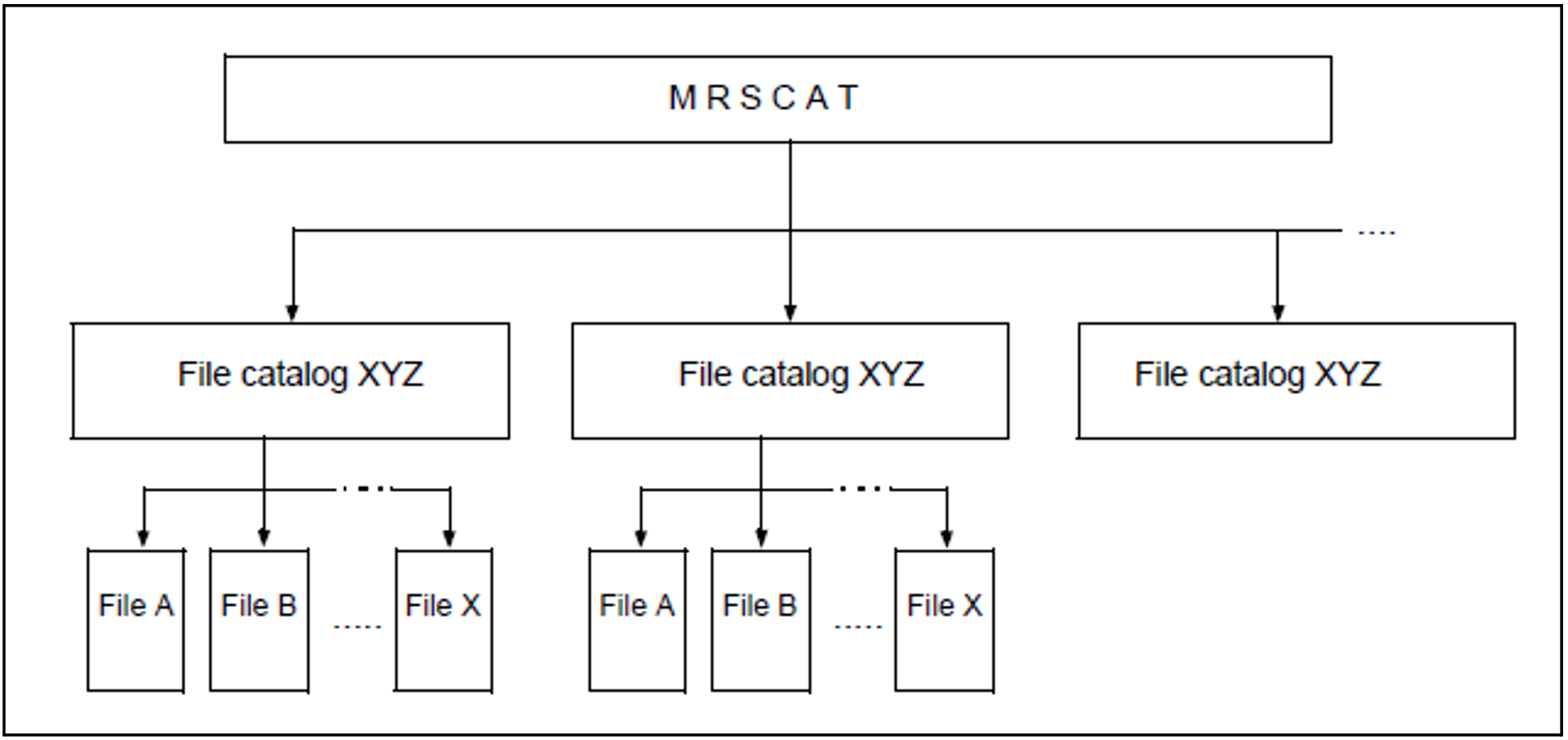The term pubset metadata is taken to mean all data that is ultimately required for pubset operation, e.g. the physical configuration data, the physical and logical properties and the operating parameters (user catalogs, user quotas, etc.).
In addition to the pubset metadata described below, the system files $TSOS.SYSCAT.STORCLS (storage class catalog) and $TSOS.SYSCAT.VSETLST (volume set list catalog) can also be contained on SM pubsets, see the "System Managed Storage" manual [28].
Standard Volume Label (SVL) of Pubres and Volres
All volume set-global information is stored in the SVL (standard volume label) of the Pubres of an SF pubset or the Volres of a volume set.
The SVL is built up of two different record types.
DMS record
This contains a reference to the TSOSCAT or TSOSCAT.<volume-set-id> file catalog, the value of the allocation unit, an indicator for normal/abnormal termination of the last pubset session, an operating mode identifier (local or shared) and information on any cache used.Pubset record
This contains the volume configuration (volume catalog) of the SF pubset/volume set. The volume catalog is stored in different locations, depending on the maximum number of volumes:If the maximum number of volumes is 32, it is stored in the pubset record itself. The volume catalog in the pubset record contains the VSN, the volume type of each volume and the time stamp from the last operating phase of the volume.
If the maximum number of volumes is 255, it is stored in a special 4KB block on the Pubres/Volres. In this case, the pubset record only contains a reference to this block.
The complete SVL is set up at the time of pubset generation with the SIR and VOLIN utility routines.
Pubset configuration file
SF pubsets have no pubset configuration file. In the case of SM pubsets the pubset configuration file is set up when the SM pubset is generated or when several SF pubsets are grouped together to form an SM pubset.
The pubset configuration file ($TSOS.SYS.PUBSET.CONFIG) has two functions:
Storing all configuration data of an SM pubset
Storage medium for the reconfiguration data in the case of a reconfiguration job for the pubset
The pubset configuration file is an ISAM file and consists of three record types:
Pubset record
Contains all pubset-global data for the SM pubset, e.g. the number of volume sets and the name of the control volume set.Volume set record
The number of these records corresponds to the number of volume sets. These contain all volume set-specific operating data.Reconfiguration record
Contains just the information that is required to resume an interrupted reconfiguration job.
The pubset configuration file can only be modified while the SM pubset is operational.
MRSCAT list
MRSCAT is a list of all pubsets which are known to a BS2000 system. It contains the static (permanent) and dynamic operating parameters of the pubset. It is also the list of all file catalogs and provides information on their availability. MRSCAT is a central DMS data structure and is always the starting point for file addressing.
Figure 10: MRSCAT catalog structure - file catalog
Static operating parameters
The two ISAM files $TSOS.SYSTEM.MRSCAT and $TSOS.SYSTEM.MRSCAT.COPY are used for permanent storage of the operating parameters. They are stored on the home pubset and kept consistent to enable access to valid data if one of the two files fails. The files are set up during system initialization when a pubset is used as the home pubset for the first time.
MRSCAT information for the home pubset and for control volume sets of SM pubsets is also stored on the first page of the catalog file TSOSCAT or TSOSCAT.<control-volume-set-id>. This is necessary in order to avoid deadlock situations during startup as the ISAM files accesses are only possible when the pubset concerned is operating. The catalog file, by contrast, can be accessed at a very early stage with CMS functions.
Dynamic operating parameters
The second function of the MRSCAT list is the high-performance storage of all pubset operating parameters in main memory during the BS2000 session. An entry exists in MRSCAT for each volume set, SF pubset or SM pubset. The catalog ID, which corresponds to the current pubset or volume set ID, is used as the identifier for the MRSCAT entry.

